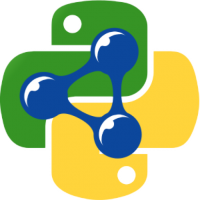Loading and saving RDF¶
Reading an n-triples file¶
RDF data has various syntaxes (xml, n3, ntriples,
trix, JSON-LD, etc) that you might want to read. The simplest format is
ntriples, a line-based format. Create the file demo.nt in
the current directory with these two lines:
<http://bigasterisk.com/foaf.rdf#drewp> <http://www.w3.org/1999/02/22-rdf-syntax-ns#type> <http://xmlns.com/foaf/0.1/Person> .
<http://bigasterisk.com/foaf.rdf#drewp> <http://example.com/says> "Hello world" .
You need to tell RDFLib what format to parse, use the format
keyword-parameter to parse(), you can pass
either a mime-type or the name (a list of available parsers is available). If you are not sure what format your
file will be, you can use rdflib.util.guess_format() which will
guess based on the file extension.
In an interactive python interpreter, try this:
from rdflib import Graph
g = Graph()
g.parse("demo.nt", format="nt")
print(len(g)) # prints 2
import pprint
for stmt in g:
pprint.pprint(stmt)
# prints :
(rdflib.term.URIRef('http://bigasterisk.com/foaf.rdf#drewp'),
rdflib.term.URIRef('http://example.com/says'),
rdflib.term.Literal('Hello world'))
(rdflib.term.URIRef('http://bigasterisk.com/foaf.rdf#drewp'),
rdflib.term.URIRef('http://www.w3.org/1999/02/22-rdf-syntax-ns#type'),
rdflib.term.URIRef('http://xmlns.com/foaf/0.1/Person'))
The final lines show how RDFLib represents the two statements in the file. The statements themselves are just length-3 tuples; and the subjects, predicates, and objects are all rdflib types.
Reading remote graphs¶
Reading graphs from the net is just as easy:
g.parse("http://bigasterisk.com/foaf.rdf")
print(len(g))
# prints 42
The format defaults to xml, which is the common format for .rdf
files you’ll find on the net.
RDFLib will also happily read RDF from any file-like object,
i.e. anything with a .read() method.
